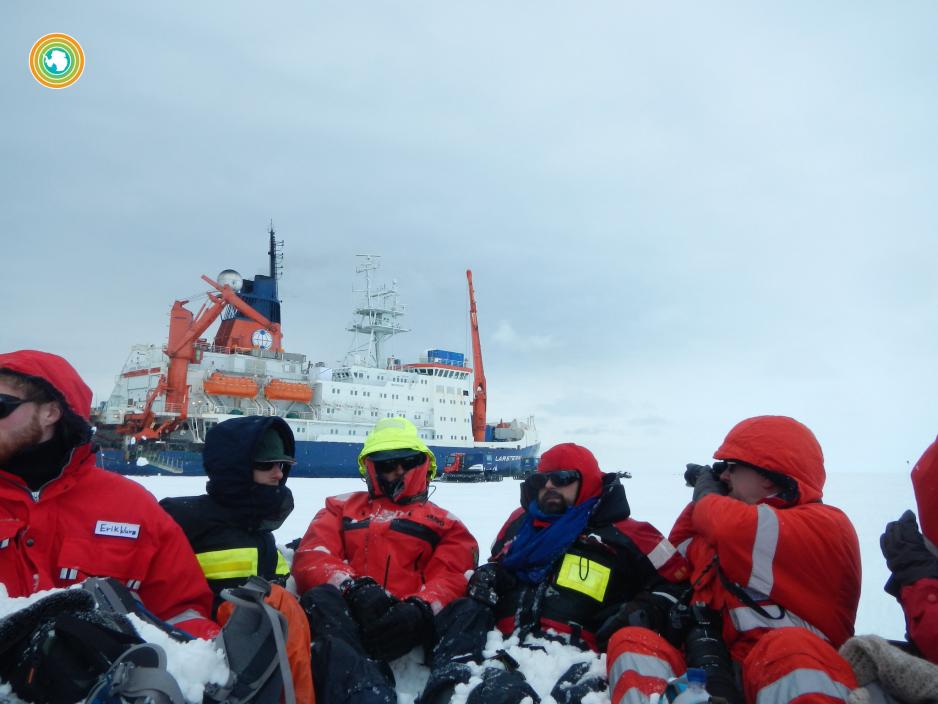Arctic Researchers Will Be Locked in Sea Ice For a Year to Study the Changing Polar Region

During the trip, some 600 researchers from 19 countries will conduct studies as part of the multidisciplinary Arctic Climate Studies Observatory (MOSAiC), which will also involve a variety of aircraft and other icebreakers. Photo Credit to Hannah Zanowski SOCCOM Project
The German icebreaker "Polarstern" is one of the world's largest research vessels. On Friday the ship will depart from Tromsø, Norway, and let itself become trapped in the ice for over one year.
In 1893, Arctic explorer Fridtjof Nansen of Norway deliberately froze his wooden ship, the Fram, into the drifting sea ice north of Siberia. His rationale: Rather than fighting the ice, which had thwarted previous efforts to reach the North Pole, he’d allow the ice itself to carry him close to his goal.
Ultimately, Nansen ended up abandoning the Fram and skiing hundreds of miles to a British base after he realised he was not on course to hit the pole, but the ship made it across the ice cap intact and the expedition resulted in groundbreaking scientific discoveries about the Arctic and weather patterns.
Friday, an international expedition led by the German icebreaker Polarstern will use Nansen’s strategy in the biggest Arctic science expedition to this date.
The ship will depart from Tromsø, Norway, and then let itself become trapped in the ice. Researchers plan to spend the next 13 months drifting past the North Pole before returning to Germany in the fall of 2020.
The project is a collaboration between 19 nations. Researchers from Norway, Germany, the United States and Russia are among the participants.
On Friday, the ship sails towards the North Arctic waters, where it will be frozen in the ice with a crew of 38, as well as 63 scientists from different countries. The goal of the expedition is to improve understanding of global warming and to investigate the Arctic as warming epicenter.
Hundreds of scientists involved
The expedition is led by climate scientist Markus Rex, who is affiliated with the German research institute Alfred Wegener Institute.
However, the logistics of the expedition do not only consist of the icebreaker Polarstern, which nevertheless is the heart of the operation.
At least three research aircraft will be involved and a special landing strip is being built in the ice for them. Four Russian, Chinese and Swedish icebreakers will be responsible for the supply and change of personnel during the period the ship is frozen.
A whole society will be created on the ice. Long-range helicopters will also be on standby, and fuel depots will be deployed to them so that they can reach the expedition should emergencies occur.
Epicenter of global warming
In an interview with MOSAiC's own website, Expedition Manager Markus Rex from the Alfred Wegener Institute says that the knowledge about the area they are visiting is not good enough.
"No other region of the Earth has warmed as rapidly over the past few decades as the Arctic; in essence, it is the epicentre of global warming. But at the same time, we still barely understand the region; in particular, the Central Arctic in winter remains virtually unknown. Accordingly, our goal is to comprehensively investigate, for the first time, local processes within the climate system."
He says the goal is to provide in-depth data that can help predict how the climate is developing. "And we can only get the data on site."
The expedition has five focus areas: Biogeochemistry, the atmosphere, the sea ice, the sea and the ecosystem.
Dream come true
During the voyage, some 600 scientists from 19 countries will conduct studies as part of the Multidisciplinary drifting Observatory for the Study of Arctic Climate (MOSAiC), which will also involve a host of aircraft and other icebreakers.
Eight years in the making, the $134 million MOSAiC will monitor the rapidly changing Arctic’s physical, geochemical, and biological systems, from the start of sea-ice growth in the fall through its breakup the following summer.
“For an Arctic marine biologist this expedition is a dream come true,” says Rolf Gradinger, of the Arctic University of Norway in Tromsø to Sciencemag.com

